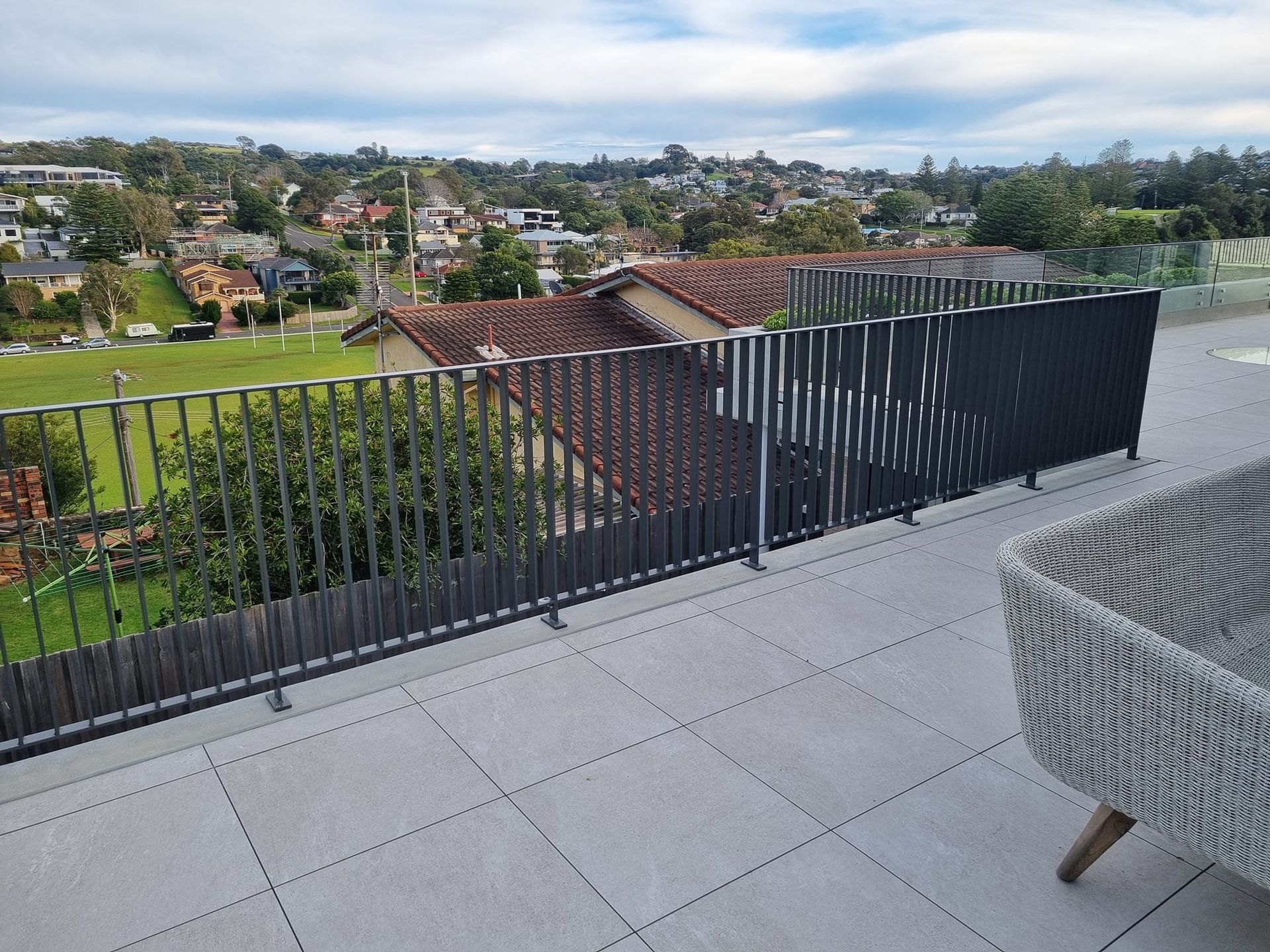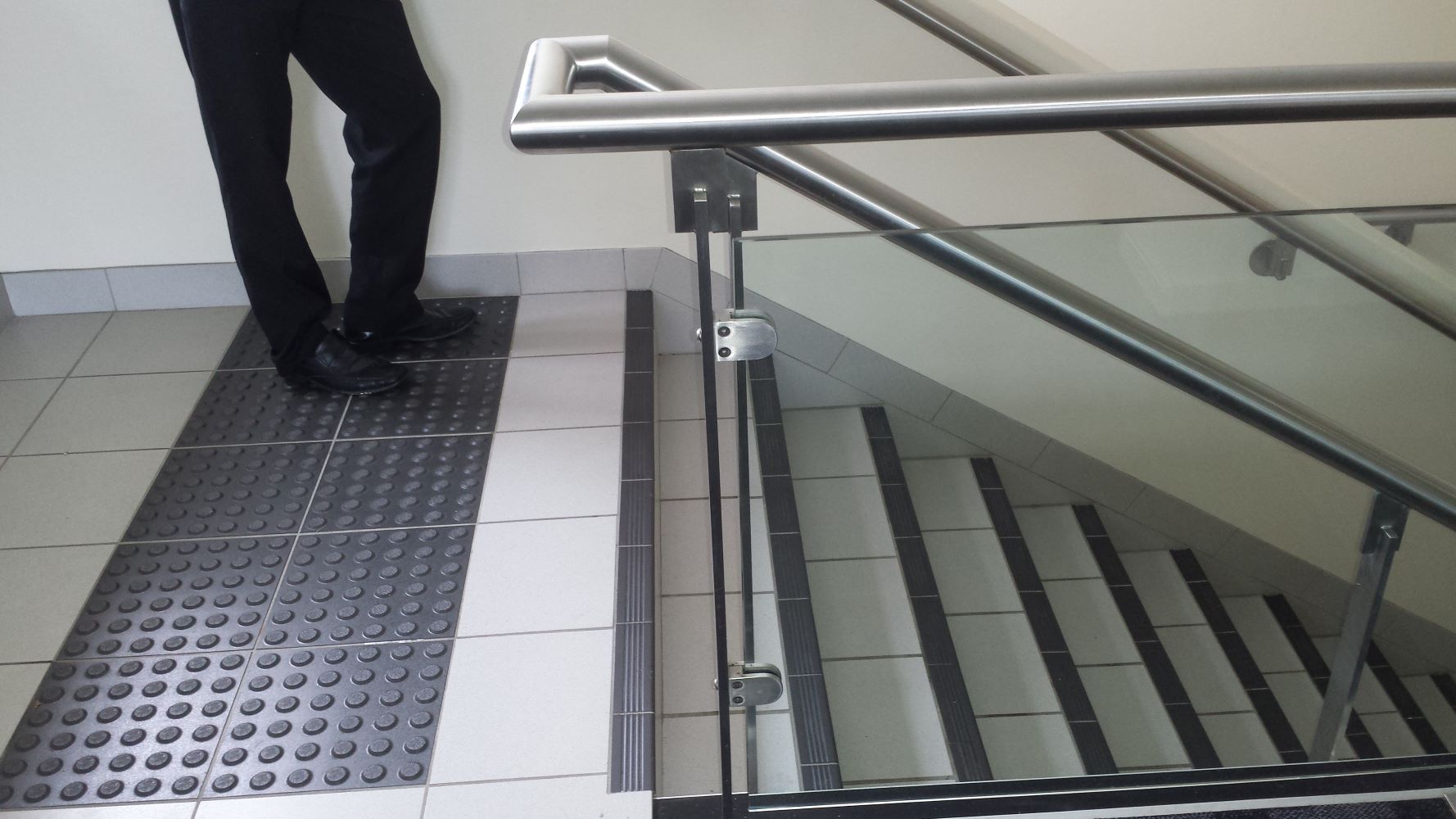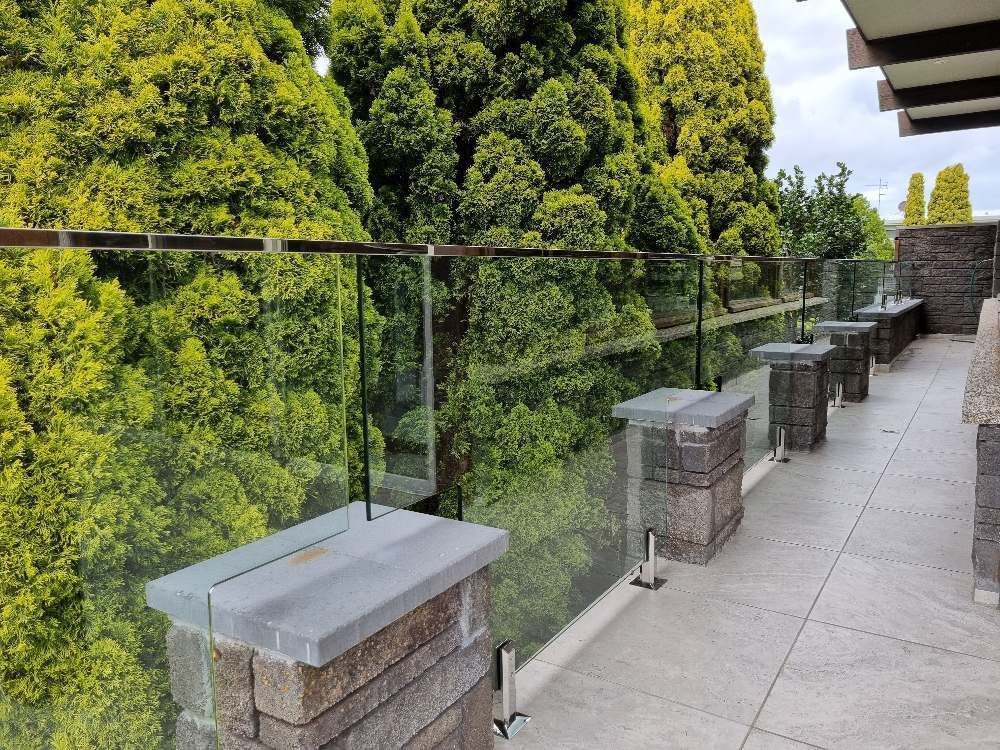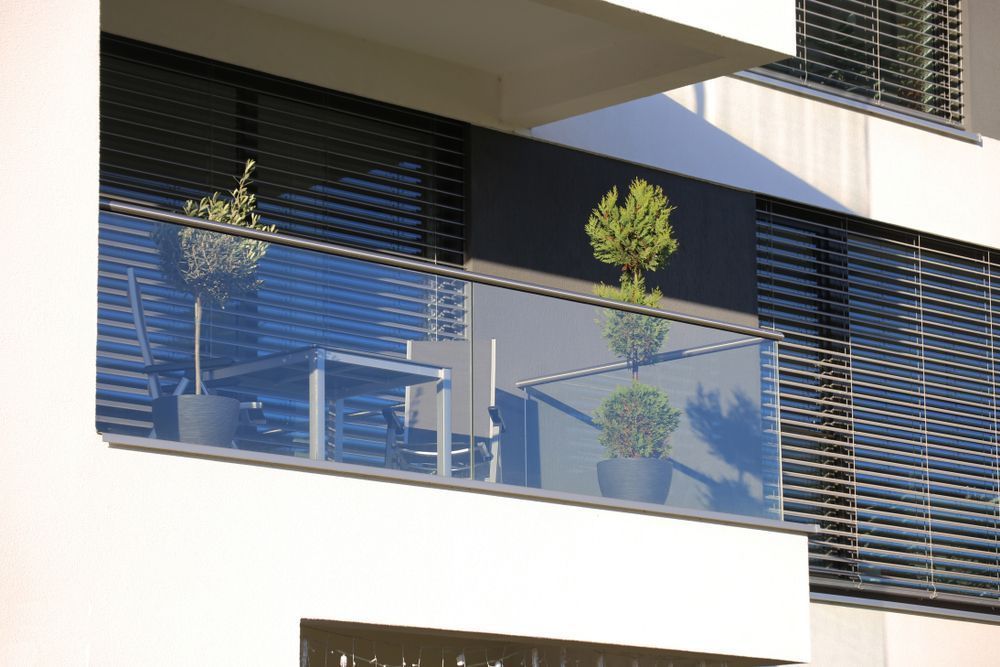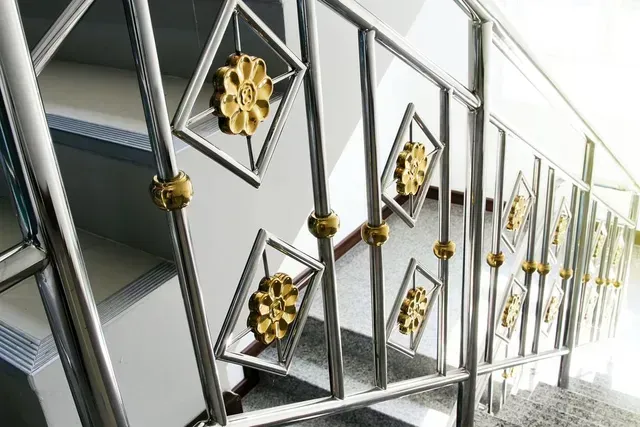8 Signs It’s Time to Replace Your Old Balustrades
1. Visible Rust or Corrosion on Metal Balustrades
Metal balustrades are common in residential and commercial settings, but their constant exposure to the elements makes them vulnerable to corrosion. Rust is a tell-tale sign that the integrity of the material is breaking down. What may start as surface oxidation can quickly progress to pitting and compromise the structural strength of the entire system.
Look out for:
- Rust marks seeping onto adjoining surfaces
- Bubbling or peeling paint indicates moisture under the coating
- Discoloured or flaking metal sections
- Signs of metal thinning or perforation around fixings
If your balustrade shows any of these symptoms, replacing it with powder-coated aluminium or stainless steel can provide better resistance to corrosion and harsh weather conditions.
2. Loose or Wobbly Posts & Handrails
Balustrades should feel solid and secure when pressure is applied. If any part of the system moves—especially the handrail or support posts—it’s a red flag that the fixings have failed or the substrate they’re anchored to has deteriorated.
Common causes of instability include:
- Anchor bolts loosening from timber rot or cracked concrete
- Fasteners corroded from moisture exposure
- Poor-quality original installation
- Age-related material fatigue
When these issues are present, a complete replacement ensures the new system is anchored correctly and compliant with safety standards.
3. Cracks or Splinters in Timber Balustrades
Timber balustrades bring warmth and character but require upkeep to prevent deterioration. Exposure to moisture, UV rays, and pests can cause the timber to split, rot or splinter, posing safety risks, particularly when bare skin comes into contact with damaged surfaces.
Check your timber balustrades for:
- Hairline or deep cracks along the grain
- Discolouration or softness indicating rot
- Sharp splinters or jagged breaks
- Loose joints from shrinking or swelling wood
If any of these are evident, consider upgrading to treated hardwoods or aluminium-look timber alternatives that offer visual appeal with added longevity.
4. Glass Panels with Chips, Cracks, or Fogging
Glass balustrades deliver a clean, modern aesthetic but can suffer damage from accidental impacts or weathering over time. Even minor cracks or chips reduce the structural integrity of the glass, while fogging between panels or inside laminates may signal moisture ingress.
Signs your glass balustrade may need replacing:
- Chipped or cracked glass edges
- Cloudiness or fogging between panes
- Unstable glass panels in their mounting system
- Scratches that obscure visibility or detract from appearance
Replacing damaged glass panels with modern safety glass ensures continued compliance with building codes and maintains the visual appeal of your space.
5. Balustrades No Longer Meet Safety Codes
Building regulations change over time, and older balustrades may no longer satisfy current height, spacing or load requirements. This is especially critical when properties are renovated or repurposed, triggering compliance reviews.
Scenarios requiring compliance checks:
- Renovations involving balconies or staircases
- New uses for existing spaces (e.g. converting a deck to a public area)
- Property sales requiring building certification
- Insurance assessments highlighting non-compliance
- Updating your balustrade to meet current codes ensures the safety of occupants and reduces liability for property owners.
6. Difficulty Maintaining or Cleaning the System
Older balustrades—especially those made from wrought iron or untreated wood—can become high-maintenance over time. Repainting, sanding, and re-tightening fixtures can become increasingly time-consuming and costly.
Signs your balustrade is becoming a maintenance burden:
- Paint or sealant flaking frequently
- Surfaces that trap dirt, mould or algae
- Complex profiles that are hard to clean
- Recurrent repairs or patch jobs
Switching to low-maintenance options like powder-coated aluminium, stainless steel or composite materials can dramatically reduce upkeep and provide a clean, modern finish.
7. The Balustrade Design Looks Dated or Out of Place
Beyond function, balustrades play a key role in the overall aesthetic of your space. An outdated or mismatched design can negatively affect the appearance of your home or commercial property, especially if other elements have been modernised.
Modern design trends include:
- Frameless or semi-frameless glass for a minimalistic look
- Vertical aluminium or stainless rods replacing bulky timber rails
- Timber-aluminium hybrids combining warmth and durability
- Custom colour finishes to suit architectural themes
Replacing an outdated system allows you to match your property’s design language better and potentially increase its market appeal.
8. Structural Damage After Accidents or Severe Weather
Balustrades are often exposed to the brunt of strong winds, falling branches or accidental impacts. Even if the damage isn’t immediately visible, the underlying structure could be compromised, weakening its load-bearing ability.
Post-event signs to inspect include:
- Misaligned or tilted posts
- Cracks in footings or wall mountings
- Dislodged panels or loosened brackets
- Debris damage that’s been patched over
Following any significant incident, a professional inspection is essential. Full replacement is often safer and more cost-effective than attempting piecemeal repairs.
Replacing Balustrades in Wollongong? We’ve Got You Covered
At D & T Balustrade Systems , we understand that a secure and visually appealing balustrade is essential for safety and design integrity. Whether your current system shows signs of wear, no longer complies with regulations, or simply doesn’t suit your updated space, we’re here to help.
Replacing balustrades is not just about aesthetics—it’s about ensuring your property meets modern safety standards and functions as intended.
Give us a call
to discuss your needs or book a consultation. Our team will guide you through every step—from design and compliance to installation—ensuring your next balustrade is safe and stylish.
